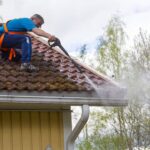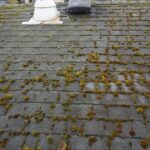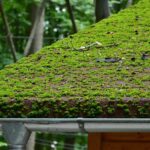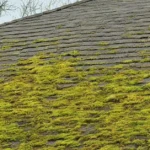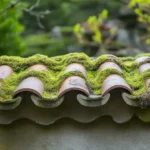In recent years, green roofs have gained immense popularity among homeowners seeking sustainable and eco-friendly solutions for their homes. One crucial aspect of maintaining these innovative structures is ensuring effective roof drainage for green roofs. Proper drainage not only supports the health of the green roof vegetation but also prevents potential water damage and structural issues. In this article, we will explore the significance of roof drainage systems in green roofs, their components, installation tips, and maintenance practices.

Understanding Green Roofs
Green roofs, also known as living roofs, are rooftops covered with vegetation. They offer numerous benefits, including improved insulation, reduced energy consumption, enhanced air quality, and increased biodiversity. However, to harness these advantages, it is essential to maintain an efficient roof drainage system.
The Importance of Roof Drainage for Green Roofs
Effective drainage systems are vital for green roofs as they manage excess water during heavy rainfall, prevent waterlogging, and ensure the long-term health of the vegetation. Without proper drainage, water can accumulate, leading to several issues, including root rot, structural damage, and even leaks within the building.
Components of a Roof Drainage System
A robust roof drainage system for green roofs comprises several key components:
- Drainage Layer: This layer is typically made of lightweight materials that facilitate water flow and prevent clogging.
- Filter Fabric: A filter fabric is placed above the drainage layer to prevent soil particles from clogging the drainage system.
- Retention Layer: This layer retains a portion of rainwater, ensuring moisture availability for plants during dry periods.
- Drainage Outlets: These outlets direct excess water away from the roof, preventing pooling and ensuring efficient drainage.
Installation Tips for Roof Drainage Systems
When installing a roof drainage system for green roofs, consider the following tips:
- Consult Professionals: Engage experienced professionals to design and install the drainage system, ensuring it meets your specific green roof requirements.
- Choose the Right Materials: Select high-quality materials that can withstand environmental conditions and provide long-lasting performance.
- Regular Maintenance: Schedule regular inspections and maintenance to identify and address any issues promptly.
Maintenance Practices for Optimal Performance
To ensure the longevity and efficiency of your green roof drainage system, follow these maintenance practices:
- Clear Debris: Regularly remove leaves, dirt, and other debris that may clog drainage components.
- Inspect Drainage Outlets: Check for any blockages or damage to drainage outlets and clean them as needed.
- Monitor Water Flow: During heavy rain, observe the water flow and drainage performance to identify potential issues.
Choosing the Right Roof Drainage System
Selecting the appropriate drainage system depends on various factors, including the roof’s slope, size, and regional climate. You can find more insights on choosing the right drainage system on this informative blog.
Understanding Roof Slope
The slope of the roof plays a crucial role in determining the type of drainage system needed. Flat roofs require more robust drainage solutions, while sloped roofs may rely on natural water flow.
Regional Climate Considerations
Climate conditions, such as heavy rainfall or drought, influence the design and functionality of the drainage system. It is essential to tailor the system to suit the local weather patterns.
Innovations in Roof Drainage Systems
Advancements in technology have led to innovative drainage solutions for green roofs. From smart monitoring systems to eco-friendly materials, these innovations enhance the efficiency and sustainability of green roof drainage.
Smart Monitoring Systems
Smart monitoring systems provide real-time data on water levels, drainage performance, and potential issues, allowing homeowners to take proactive measures.
Eco-Friendly Materials
The use of eco-friendly materials in drainage systems reduces environmental impact and enhances the overall sustainability of green roofs.
Case Studies: Successful Roof Drainage Implementations
Several successful green roof projects have demonstrated the effectiveness of well-designed drainage systems. These case studies highlight the importance of proper planning and execution in achieving optimal results.
Roof Drainage Solutions for Different Building Types
Green roofs can be installed on various building types, from residential homes to commercial and large buildings. Each type requires specific drainage solutions to ensure effectiveness and longevity. For more information on drainage solutions, visit roof drainage for residential buildings.
Residential Buildings
In residential buildings, roof drainage systems must address specific challenges, including limited space and aesthetic considerations.
Commercial Buildings
Commercial buildings often have larger roof areas, requiring efficient drainage solutions to handle increased water volume.
Large Buildings
Large buildings, such as shopping malls or industrial complexes, demand robust drainage systems to prevent water accumulation and damage.
DIY Roof Drainage Maintenance Tips
While professional maintenance is crucial, homeowners can also perform basic DIY maintenance to keep their green roof drainage systems in top condition.
- Regular Inspections: Conduct routine inspections to identify any visible issues or blockages.
- Cleaning Gutters: Clean gutters and downspouts to prevent clogs and ensure efficient water flow.
- Check for Leaks: Inspect the roof for any leaks or signs of water damage, addressing them promptly.
Future Trends in Green Roof Drainage Systems
The future of green roof drainage systems is promising, with ongoing innovations and sustainability efforts driving the industry forward.
Integration with Smart Home Technology
The integration of smart home technology with drainage systems allows homeowners to monitor and control drainage remotely, enhancing convenience and efficiency.
Sustainable Design Practices
Future trends emphasize sustainable design practices, incorporating eco-friendly materials and energy-efficient solutions.

FAQs
What is the primary purpose of roof drainage for green roofs?
The primary purpose of roof drainage for green roofs is to manage excess water, prevent waterlogging, and ensure the health and sustainability of the vegetation.
Can I install a roof drainage system myself?
While some basic maintenance tasks can be done by homeowners, it is recommended to engage professionals for the design and installation of roof drainage systems to ensure optimal performance.
Are there eco-friendly options for roof drainage systems?
Yes, there are eco-friendly options available, including the use of recycled materials and sustainable design practices that reduce environmental impact.
This article contains affiliate links. We may earn a commission at no extra cost to you.




